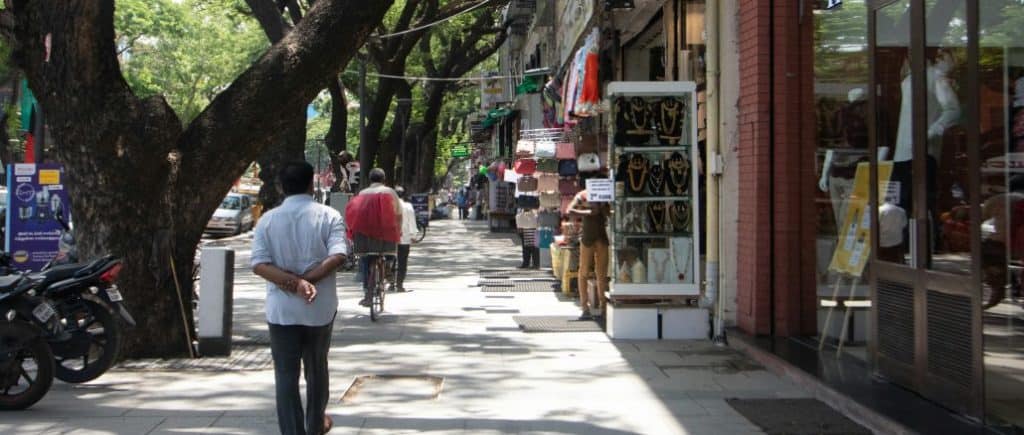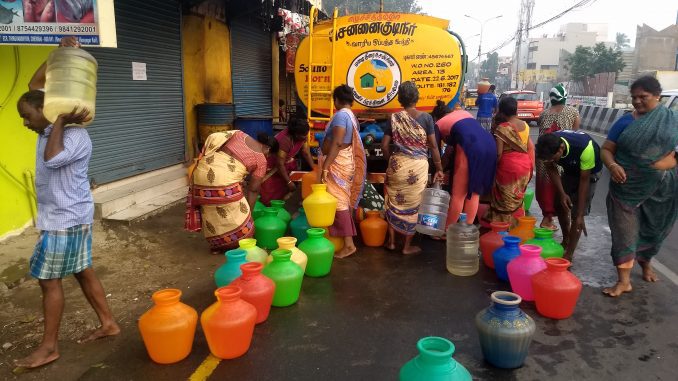After much discussions and deliberation, the Board of Executive Directors of the World Bank on September 30th formally approved a $150-million programme to assist the Tamil Nadu government in its vision of transforming Chennai into a world-class city. To quote the official statement of the Bank itself, the objective of this Chennai City Partnership is to make the capital a city that is “more green, livable, competitive, and resilient to climate change and other shocks.”
So what is the programme all about and why has the international financial institution decided to partner with Tamil Nadu’s capital?
For starters, this is not the first time that the World Bank is engaging with the state. For over three decades, the state has partnered with the World Bank for various projects in different sectors such as urban development, roads and transportation, public health, rural development and so on. One such instance was when the Bank provided financial assistance to the Alandur Municipality (now under Greater Chennai Corporation) for the construction of proper sanitation facilities under its Water and Sanitation Program (WSP) during the period between 2000-2005.
The current project focus
The current project, which is named “Chennai City Partnership: Sustainable Urban Services Program”, is part of the bank’s country partnership strategy, which recognises the role and efficiency of cities in contributing to the growth of their countries. Speaking to Citizen Matters on why Chennai was chosen for the programme, Raj Cherubal, CEO of Chennai Smart City Limited said that Chennai, as compared to other cities, has managed to execute a number of interesting projects such as the Pedestrian Plaza Project and Parking Management. The implementation and execution of these projects, according to Cherubal, had impressed World Bank officials.
“To go with it, the experience that the various administrative bodies of Chennai such as Chennai Metropolitan Water Supply and Sewerage Board (CMWSSB), Metropolitan Transport Company (MTC), Chennai Metro Rail Company (CMRL) and so on, have in communicating and coordinating various projects is something that is necessary for projects such as this. This is not a whole new project altogether. This is a project that aims to improve the already existing administrative set up in Chennai. So unless there already exists experienced governing bodies, you’re not going to be able to coordinate among various departments and execute projects efficiently,” says Cherubal.
Read more: How can commute in Chennai reinvent itself in 2021?
Junaid Ahmad, World Bank Country Director, India, also feels that the COVID-19 pandemic has revealed the cracks in the basic infrastructure services such as water, sanitation and transport in Indian cities.
In a statement issued by the World Bank, Ahmad was quoted as saying, “This program heralds the start of our partnership with the city of Chennai where we will work with GoTN to jointly create a more climate-friendly, resilient and inclusive model for managing urban growth. The experience emerging from this partnership can inform other Indian cities and, more broadly, India’s massive urban transition.”
Objectives of the project
The whole point of World Bank’s Chennai City Partnership, according to Cherubal, is that, apart from providing funding, it will also facilitate the setting up and operationalisation of various public institutions in Chennai, so that the planning and execution of urban development projects takes place more smoothly.
Some of the goals of the project, as stated by World Bank are:
- Water connectivity, supply and sewerage services
Lack of good quality water supply has been an issue haunting the people of Chennai, especially those residing in North Chennai for several years. Firstly, the residents living in many parts of North Chennai and several other areas in the city are uncertain whether and when they will get water supply, and when they finally do get it, they have to wait till the polluted water runs out of the pipe to get clear, usable water.
Read more: Why residents in northern parts of Chennai throw away pots of water every week
The Chennai City Partnership programme aims to support the creation of a Water Regulatory Authority; use of performance-based operator contracts for improving water supply and sanitation services (WSS) in the core city area; extending services to households residing in peripheral areas; improving operational efficiency (e.g. through reduction of water losses); and enhanced cost recovery (through improved collection of user charges and/or reduction of operating costs).
- Improving Urban Mobility
When it comes to public transport, accessibility and safety have been key issues that the citizens of Chennai have been facing over the years — whether you consider buses, suburban trains or even the metro rail service. For daily commuters, one of the primary causes of concern has been the inadequate number of buses in the city.
According to an earlier report by Citizen Matters in December last year, Chennai has 3600 odd buses, which is woefully inadequate for the city. The likes of Bengaluru have twice the number of buses. And as far as safety is concerned, the Mass Rapid Transit System (MRTS) suburban railway in Chennai has been in the news often enough for various incidents of robbery, anti social activities, sexual assault cases and so on.
Along with providing safe and citizen-centric mobility, the World Bank programme also aims to ensure women’s safety in public transport and public places, as well as improve the quality and quantity of bus services by providing performance- based contracts. The important goal is to operationalise the Chennai Unified Metropolitan Transport Authority (CUMTA), which has been in the pipeline for several years.
- Improving Health Care System
This will be done by expanding health services such as cancer screening, diabetes, hypertension and so on, as well as by improving the quality of public health centres so as to help them achieve the National Quality Assurance Standards. The programme also aims to enhance proper surveillance of disease and infections through more regular reporting by public and private health facilities.
- Solid Waste Management
The COVID pandemic has brought a new challenge for the residents and authorities of Chennai — waste management. Before the onset of the pandemic, Chennai Corporation along with the help of civic activists and citizens had begun to make positive strides in solid waste management through decentralised waste collection and segregation.
However, once the pandemic hit, the Corporation had to pause all other projects to prioritise COVID control. As a result, micro composting centres had to be shut down. Just as the civic body was about to resume and expedite the bioremediation of dump yards and scale up segregation measures, the second wave of the pandemic hit the country, again putting the brakes on all other initiatives.
Read more: How can we bring waste management back on track in Chennai post COVID?
World Bank’s city partnership programme aims at helping Chennai reduce waste by enabling the city to move towards a system of reuse, recycling and recovery. Along with reducing waste collection in the city, the programme also aims to help the city enhance the operational and financial sustainability of the waste management system.
Phase I of Implementation
The first phase of this ambitious project is a multi-sector Program-for-Results (PforR) operation, estimated to be achieved over a period of five years from 2021-26. According to World Bank, the idea behind the concept of PforR comes from the thought that “development is about results and institutional strengthening.”
This would enable the creation of a framework to deliver services under the Chennai City Partnership programme and strengthen the various development authorities to deliver sustainable results.
According to a report by The New Indian Express (TNIE), TN Finance Minister Palanivel Thiagarajan said that the primary focus of the PforR operation will be on urban mobility, with a focus on strengthening bus service delivery, municipal pedestrian infrastructure and women’s safety in public spaces.
Initially, the newly elected Dravida Munnetra Kazhagam (DMK) government wanted more time before signing the agreement with the financial institution in June this year. However, while presenting the state budget of the new government in August this year, the Finance Minister said that the government will go ahead with the project, which will be implemented over a period of nine years from 2021 to 2030.


Great joke. The Chennai PERUNGUDI Corporation is not delivering on the age old promise of giving basic water and sewage connection. It’s obvious that it’s just due the mafia element Nexus. The Perungudi Lakes are in bad shape.
One wonders which century these basic amenities would come through.